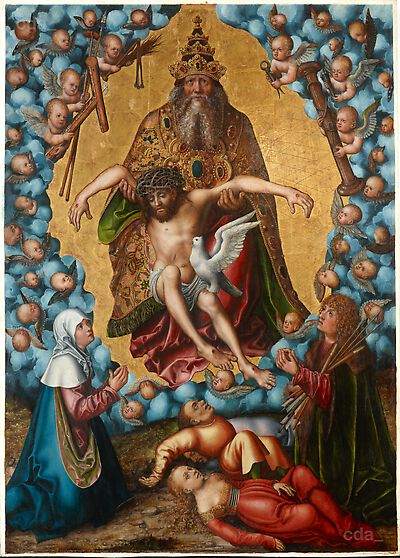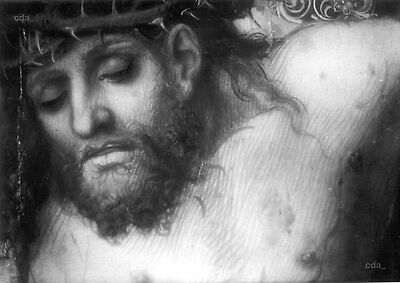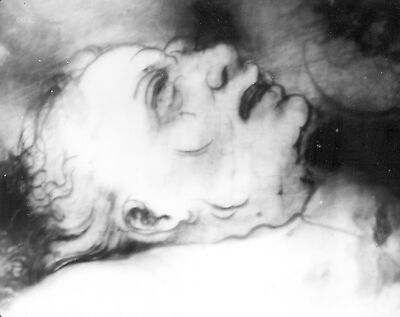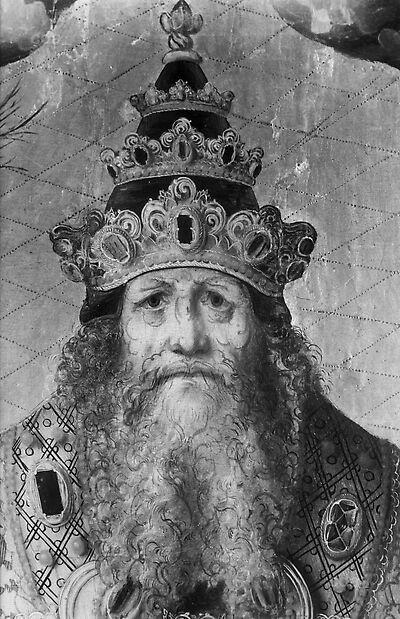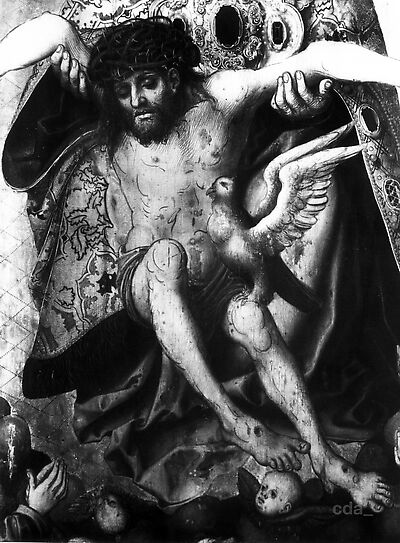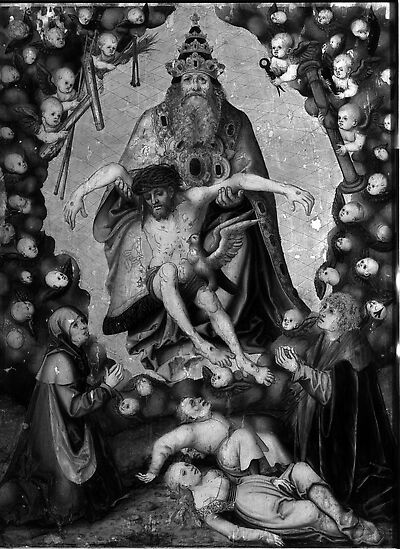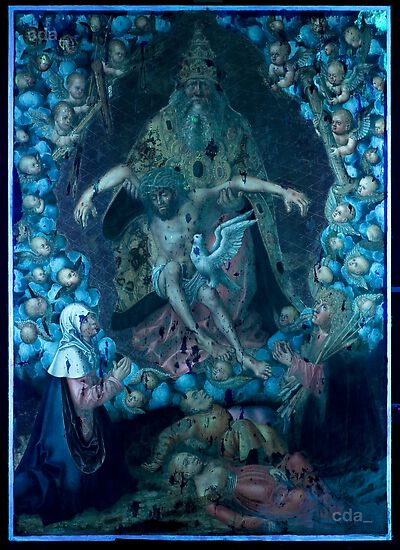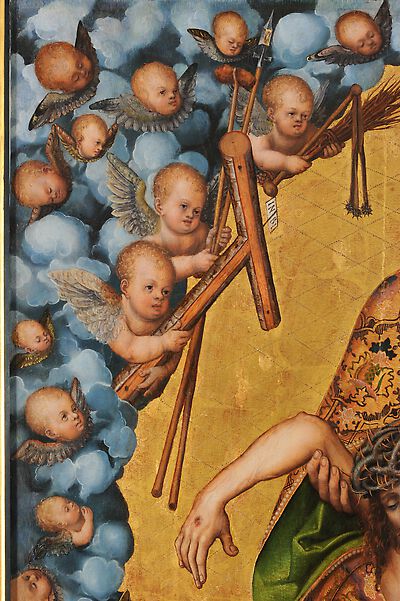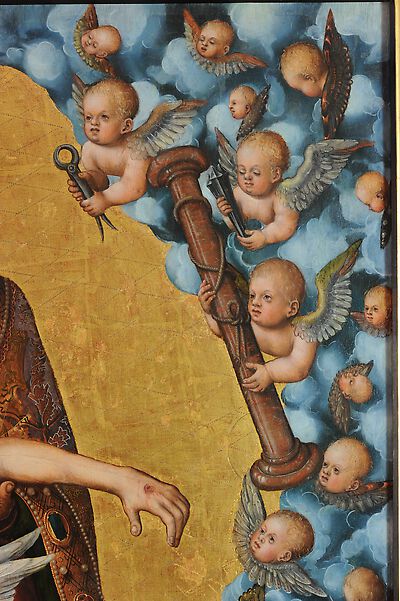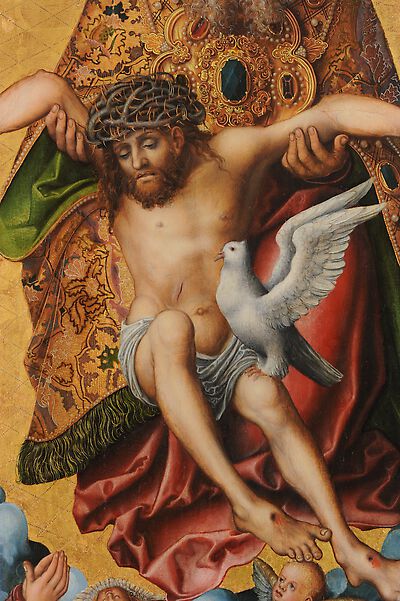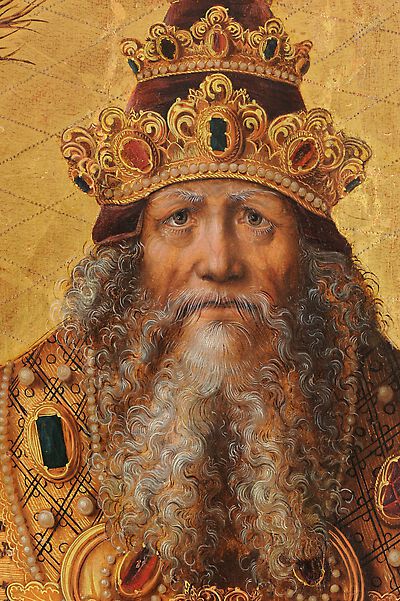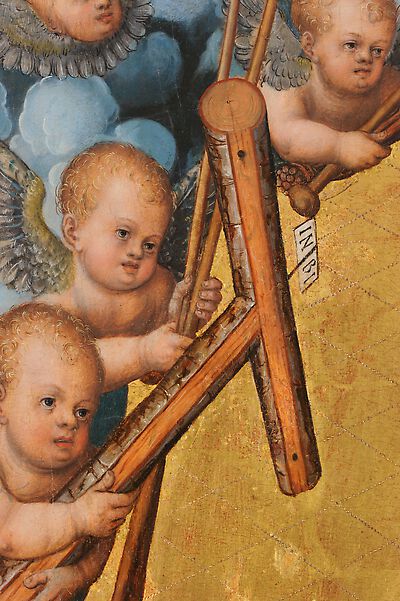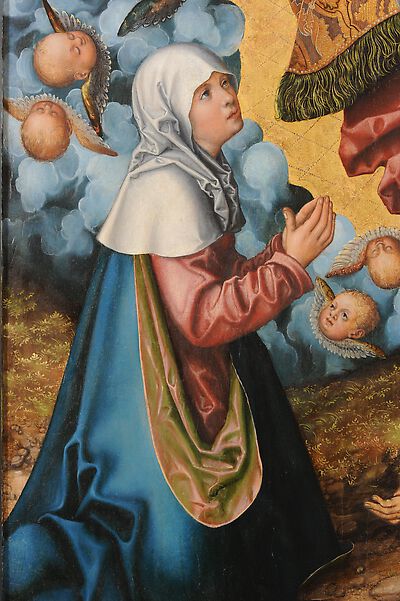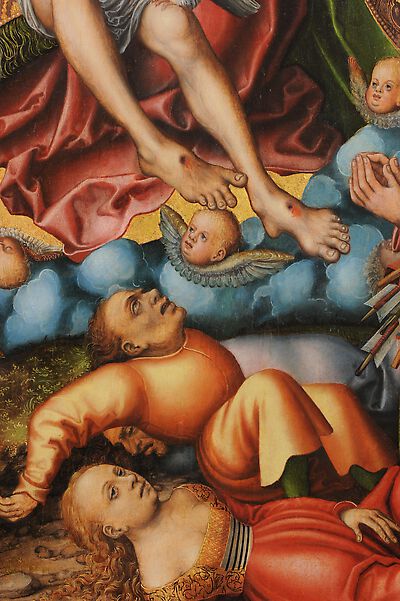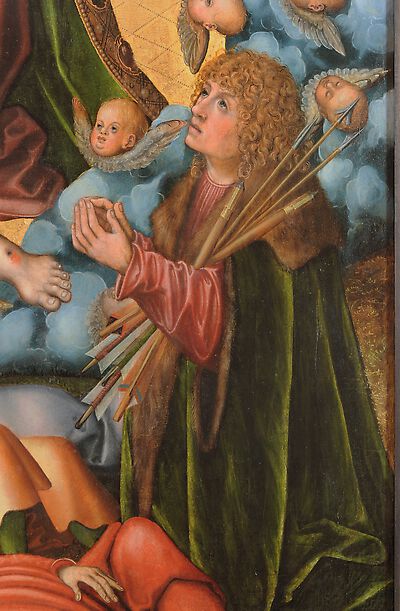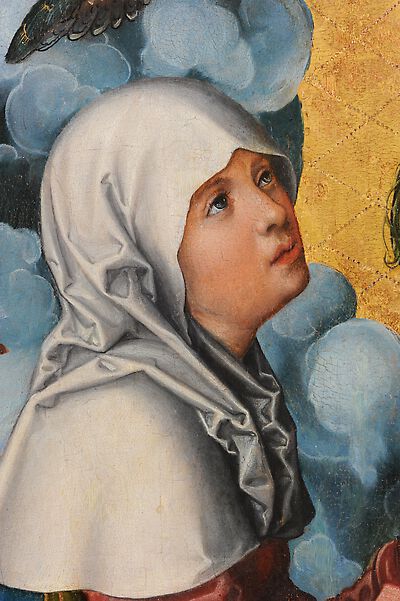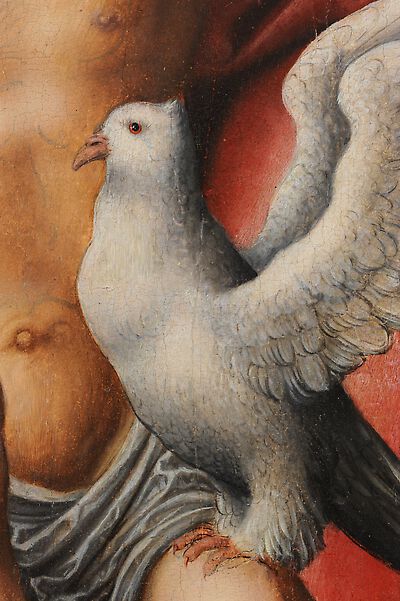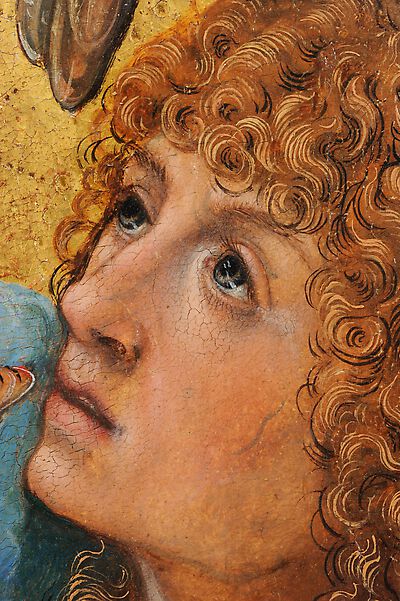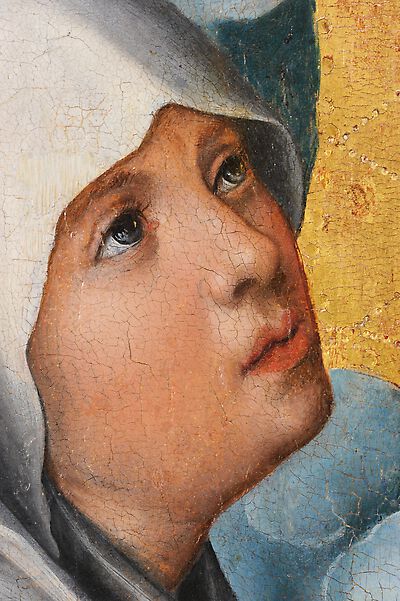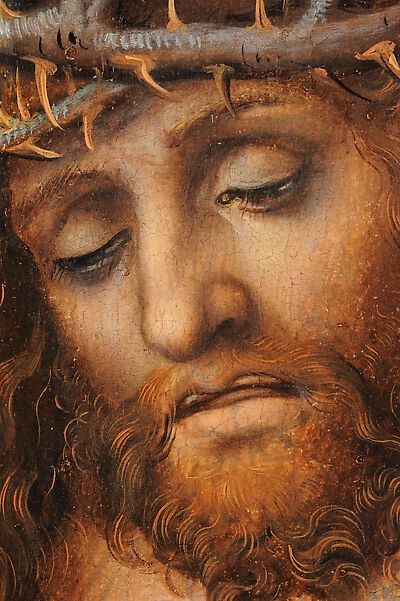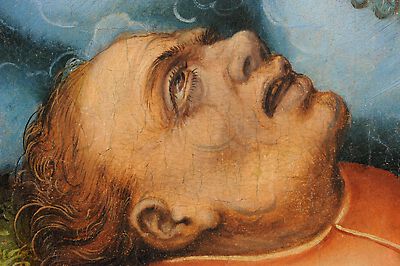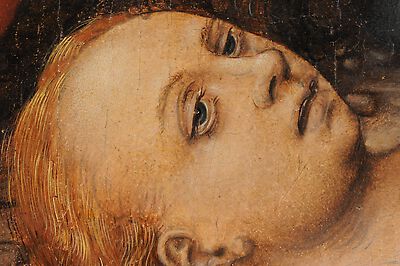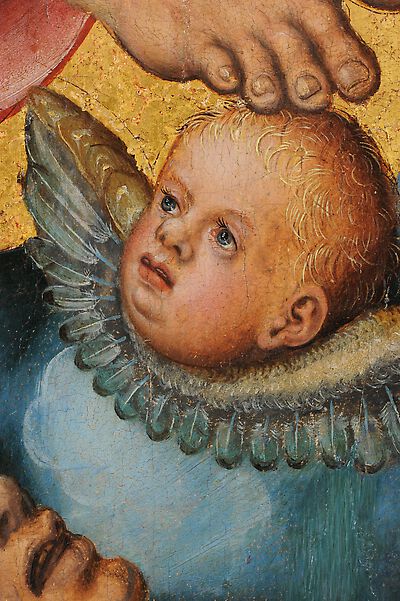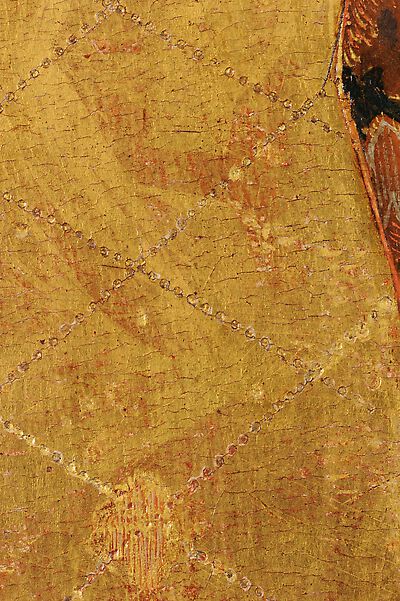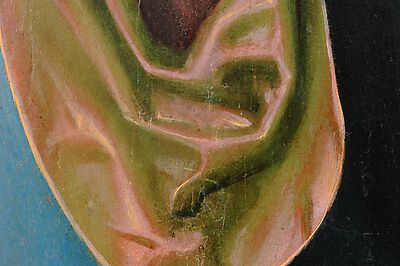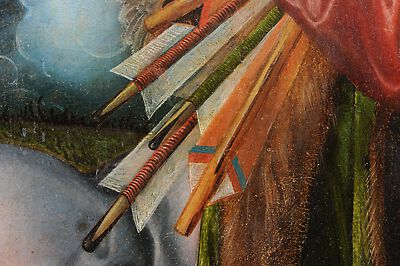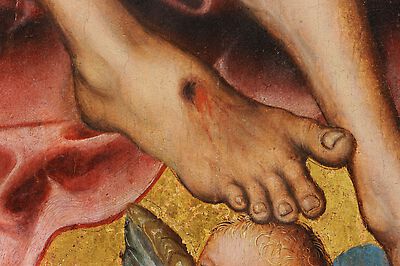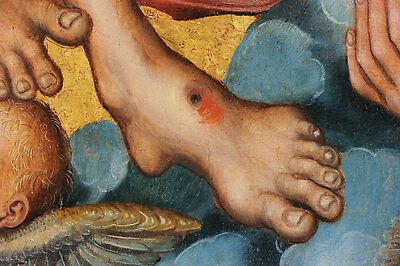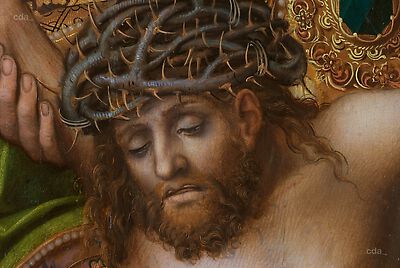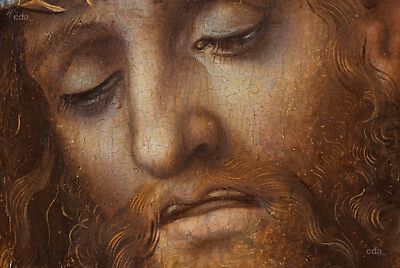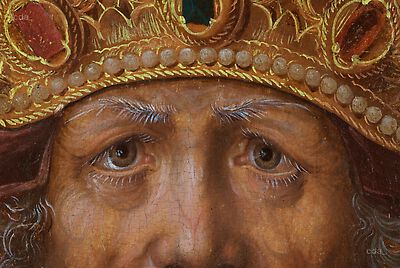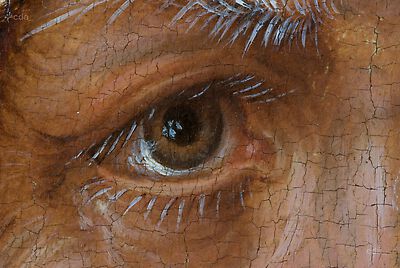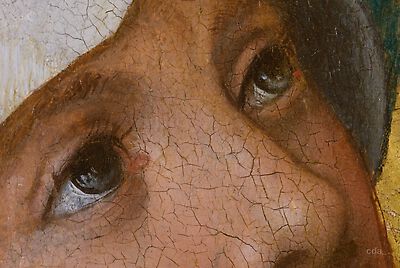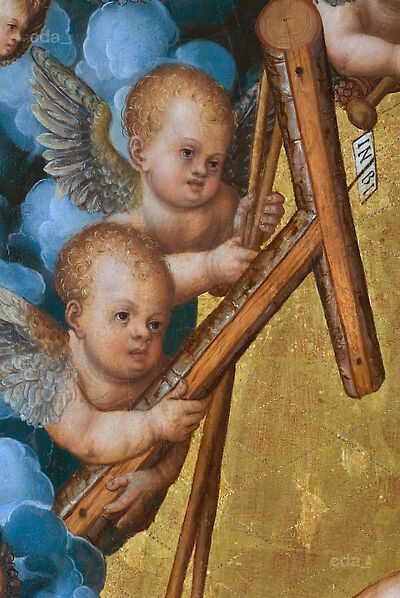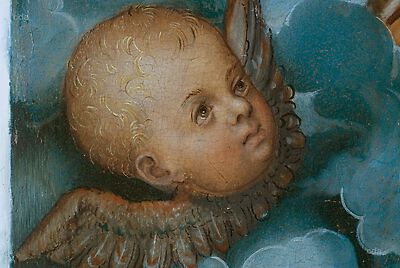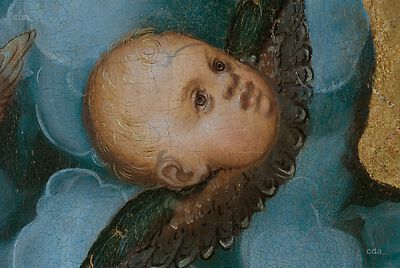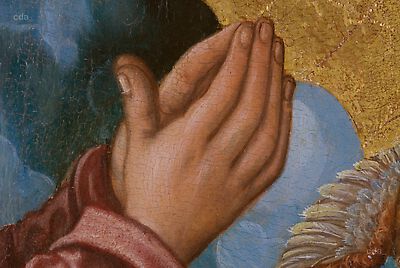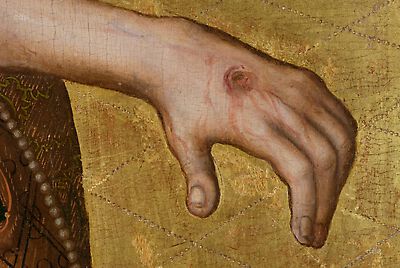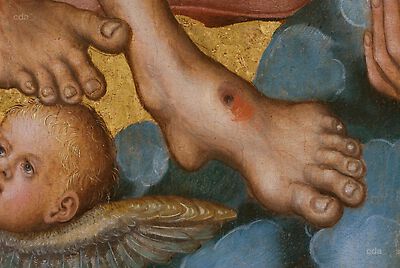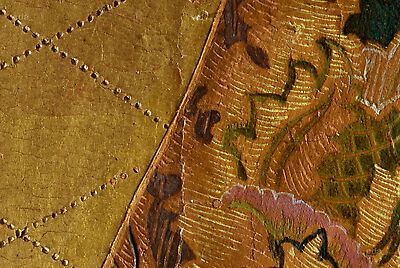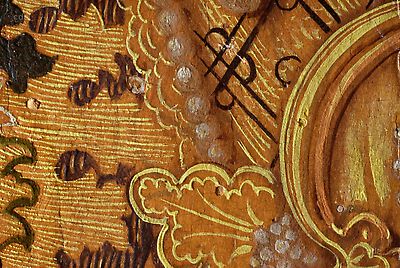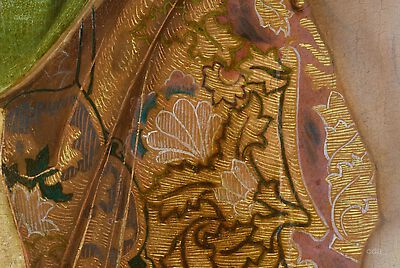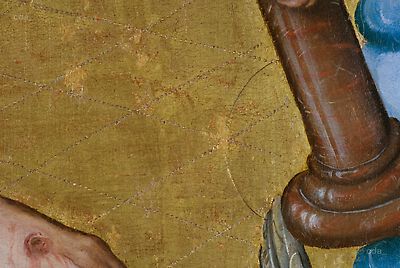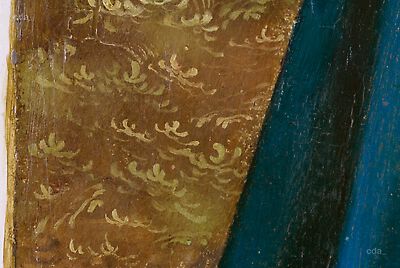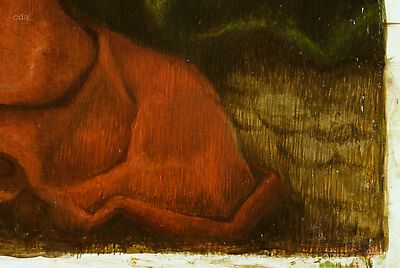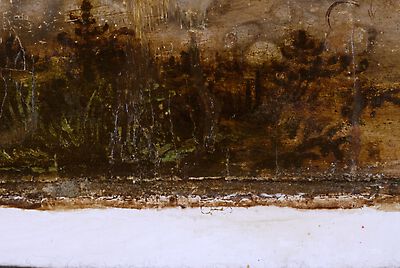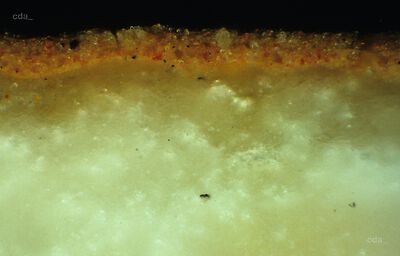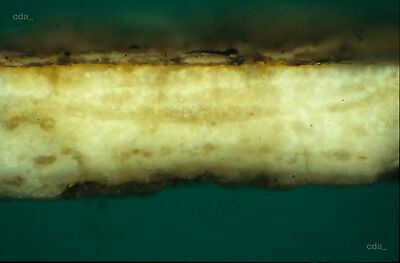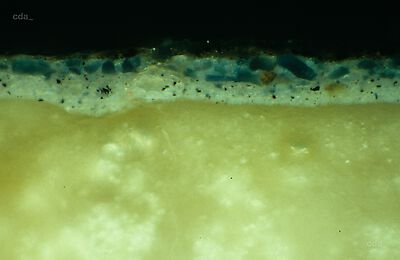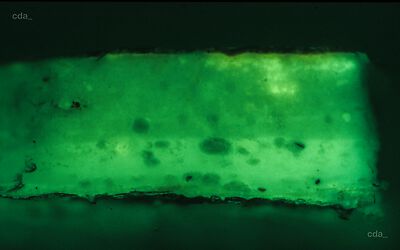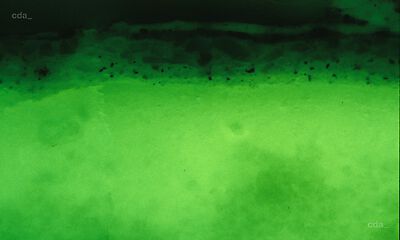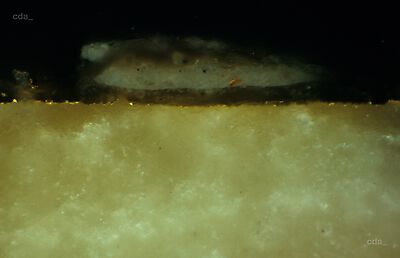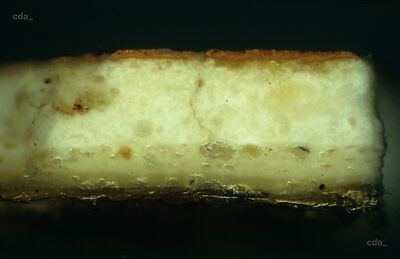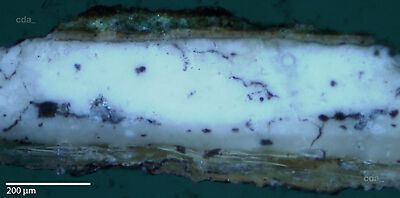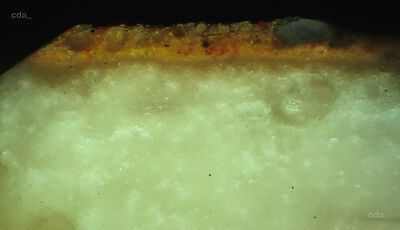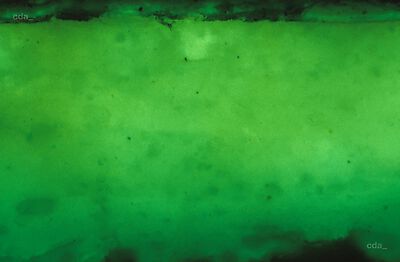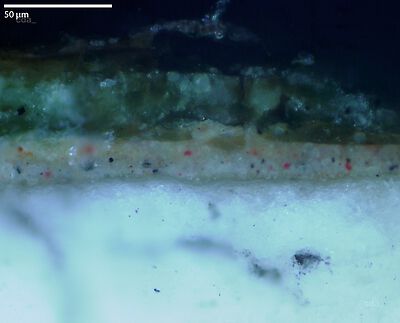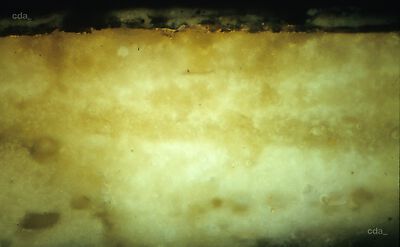| Heydenreich 2021 B |
59, 63, 69 |
|
|
| Author | Gunnar Heydenreich |
|---|
| Title | Hans Kemmer: Spuren künstlerischer Gestaltungsprozesse. Teil II: Wittenberg |
|---|
| Publication | in Dagmar Täube, ed., Lucas Cranach der Ältere und Hans Kemmer.
Meistermaler zwischen Renaissance und Reformation [Lübeck, St. Annen-Museum] |
|---|
| Place of Publication | Munich |
|---|
| Year of Publication | 2021 |
|---|
| Pages | 59-69 |
|---|
|
| Cat. Coburg 2018 |
86, fn. 11 |
under no. 14 |
|
| Author | Klaus Weschenfelder |
|---|
| Title | Cranach in Coburg. Gemälde von Lucas Cranach d.Ä., Lucas Cranach d.J., der Werkstatt und des Umkreises in den Kunstsammlungen der Veste Coburg |
|---|
| Place of Publication | Regensburg |
|---|
| Year of Publication | 2018 |
|---|
|
| Koepplin 2017 |
29, 31 |
|
Fig. 3 |
| Author | Dieter Koepplin |
|---|
| Title | Lucas Cranach Herz-Holzschnitt von 1505, betrachtet im Sinne des Johannes von Staupitz |
|---|
| Publication | in Gunnar Heydenreich, Daniel Görres, Beat Wismer, eds., Lucas Cranach der Ältere. Meister - Marke - Moderne. [Exhib. Cat. Düsseldorf 2017] |
|---|
| Place of Publication | Munich |
|---|
| Year of Publication | 2017 |
|---|
| Pages | 28-37 |
|---|
|
| Heydenreich 2007 A |
69, 98, 112, 116, 118, 179, 188, 211 |
|
|
|
|
| Heydenreich 2007 B |
37-38 |
|
14 |
| Author | Gunnar Heydenreich |
|---|
| Title | "... dass Du mit wunderbarer Schnelligkeit malest". Virtuosität und Effizienz in der künstlerischen Praxis Lucas Cranachs d. Ä. |
|---|
| Publication | in Bodo Brinkmann, ed., Cranach der Ältere, Exhib. Cat. FrankfurtA |
|---|
| Place of Publication | Ostfildern |
|---|
| Year of Publication | 2007 |
|---|
| Pages | 29-47 |
|---|
|
| Exhib. Cat. Eisenach 1998 |
128 |
No. 14.9 |
Fig. 14.9 |
| Editor | Wartburg-Stiftung, Eisenach, Fachhochschule , Ingo Sandner |
|---|
| Title | Unsichtbare Meisterzeichnungen auf dem Malgrund. Cranach und seine Zeitgenossen. Ausstellungskatalog und Tagungsband Katalogteil 1; 2: Werkstatt und Schüler Cranachs; 3: Süddeutsche Meister; 4: Albrecht Dürer und sein Kreis; 5: Rheinische Meister |
|---|
| Place of Publication | Regensburg |
|---|
| Year of Publication | 1998 |
|---|
| Pages | 229-240 |
|---|
|
| Heydenreich 1998 A |
191 |
|
|
| Author | Gunnar Heydenreich |
|---|
| Title | Herstellung, Grundierung und Rahmung der Holzbildträger in den Werkstätten Lucas Cranachs d.Ä. |
|---|
| Publication | in Ingo Sandner, Wartburg-Stiftung Eisenach and Fachhochschule Köln, eds., Unsichtbare Meisterzeichnungen auf dem Malgrund. Cranach und seine Zeitgenossen, Exhib. Cat. Eisenach |
|---|
| Place of Publication | Regensburg |
|---|
| Year of Publication | 1998 |
|---|
| Pages | 181-200 |
|---|
|
| Sandner 1998 A |
58 |
|
|
| Author | Ingo Sandner |
|---|
| Title | Zeichengeräte um 1500 |
|---|
| Publication | in Ingo Sandner, Wartburg-Stiftung Eisenach and Fachhochschule Köln, eds., Unsichtbare Meisterzeichnungen auf dem Malgrund. Cranach und seine Zeitgenossen, Exhib. Cat. Eisenach |
|---|
| Place of Publication | Regensburg |
|---|
| Year of Publication | 1998 |
|---|
| Pages | 51-60 |
|---|
|
| Sandner 1998 B |
89, 93 |
|
|
| Author | Ingo Sandner |
|---|
| Title | Cranach als Zeichner auf dem Malgrund |
|---|
| Publication | in Ingo Sandner, Wartburg-Stiftung Eisenach and Fachhochschule Köln, eds., Unsichtbare Meisterzeichnungen auf dem Malgrund. Cranach und seine Zeitgenossen, Exhib. Cat. Eisenach |
|---|
| Place of Publication | Regensburg |
|---|
| Year of Publication | 1998 |
|---|
| Pages | 83-95 |
|---|
|
| Exhib. Cat. Leipzig 1997 |
50 |
No. 10 |
Fig. p. 51 |
| Author | Herwig Guratzsch, Gisela Goldberg |
|---|
| Title | Vergessene altdeutsche Gemälde. 1815 auf dem Dachboden der Leipziger Nikolaikirche gefunden |
|---|
| Place of Publication | Heidelberg |
|---|
| Year of Publication | 1997 |
|---|
|
| Beck 1995 |
41-46 |
|
Fig. 4 |
| Author | Rüdiger Beck |
|---|
| Title | Die Restaurierung der "Dreieinigkeit" von Lucas Cranach dem Älteren |
|---|
| Journal | Museum der bildenden Künste Leipzig. Jahresheft |
|---|
| Year of Publication | 1995 |
|---|
| Pages | 41-46 |
|---|
|
| Cat. Leipzig 1995 |
34 |
No. 248 |
|
| Editor | Herwig Guratzsch |
|---|
| Title | Bestandskatalog, Museum der bildenden Künste |
|---|
| Place of Publication | Leipzig |
|---|
| Year of Publication | 1995 |
|---|
|
| Magirius et al. 1995 |
451 (Bd. 1) |
No. 47 |
Fig. 410 |
| Author | Heinrich Magirius, Hartmut Mai, Thomas Trajkovits, Winfried Werner |
|---|
| Editor | Landesamt für Denkmalpflege Sachsen |
|---|
| Title | Die Bau- und Kunstdenkmäler von Sachsen. Stadt Leipzig. Die Sakralbauten I. Mit einem Überblick über die städtebauliche Entwicklung von den Anfängen bis 1989 |
|---|
| Place of Publication | Munich, Berlin |
|---|
| Year of Publication | 1995 |
|---|
|
| Erichsen 1994 A |
162, 163 |
|
Fig. 108d |
| Author | Johannes Erichsen |
|---|
| Title | Altäre Lucas Cranachs und seiner Werkstatt vor der Reformation |
|---|
| Publication | in Claus Grimm, Johannes Erichsen, Evamaria Brockhof, eds., Lucas Cranach. Ein Maler-Unternehmen aus Franken, Exhib. Cat. Kronach 1994 |
|---|
| Series | Veröffentlichungen zur bayerischen Geschichte und Kultur |
|---|
| Volume | 26/94 |
|---|
| Place of Publication | Augsburg, Regensburg |
|---|
| Year of Publication | 1994 |
|---|
| Pages | 150-165 |
|---|
|
| Exhib. Cat. Kronach 1994 |
163 |
|
|
| Editor | Claus Grimm, Johannes Erichsen, Evamaria Brockhoff |
|---|
| Title | Lucas Cranach. Ein Maler-Unternehmer aus Franken [Festung Rosenberg, Kronach 17.05 - 21.08.1994; Museum der Bildenden Künste, Leipzig 07.09 - 06.11.1994] |
|---|
| Series | Veröffentlichungen zur bayerischen Geschichte und Kultur |
|---|
| Volume | 26 |
|---|
| Place of Publication | Augsburg, Coburg |
|---|
| Year of Publication | 1994 |
|---|
|
| Schuchardt 1994 |
98 |
|
Fig. 99 |
| Author | Günter Schuchardt |
|---|
| Title | Lucas Cranach d. Ä. Orte der Begegnung |
|---|
| Place of Publication | Leipzig |
|---|
| Year of Publication | 1994 |
|---|
|
| Sommerschuh 1994 |
125 |
|
|
| Author | J. U. Sommerschuh |
|---|
| Title | Restaurierung: Cranach-Gemälde überstand Totaloperation |
|---|
| Journal | Art |
|---|
| Issue | 10 |
|---|
| Year of Publication | 1994 |
|---|
|
| Sandner 1993 |
|
|
Fig. p. 248 |
| Author | Ingo Sandner |
|---|
| Title | Spätgotische Tafelmalerei in Sachsen |
|---|
| Place of Publication | Dresden, Basel |
|---|
| Year of Publication | 1993 |
|---|
|
| Pieper 1986 |
|
|
|
| Author | Paul Pieper |
|---|
| Title | Die deutschen, niederländischen und italienischen Tafelbilder bis um 1530 |
|---|
| Place of Publication | Aschendorff |
|---|
| Year of Publication | 1986 |
|---|
|
| Friedländer, Rosenberg 1979 |
83 |
No. 65 |
Fig. 65 |
| Author | Max J. Friedländer, Jakob Rosenberg |
|---|
| Editor | G. Schwartz |
|---|
| Title | Die Gemälde von Lucas Cranach |
|---|
| Place of Publication | Basel, Boston, Stuttgart |
|---|
| Year of Publication | 1979 |
|---|
|
| Exhib. Cat. Basel 1974/1976 |
765 (Bd. 2) |
|
|
|
|
| Schade 1974 |
63, 408 |
|
|
|
|
| Exhib. Cat. Leipzig 1965 |
|
No. 84 |
|
| Author | n. a. |
|---|
| Title | 500 Jahre Kunst in Leipzig. Ausstellung zur 800-Jahrfeier der Stadt Leipzig[Museum der bildenden Künste, Leipzig] |
|---|
| Place of Publication | Leipzig |
|---|
| Year of Publication | 1965 |
|---|
|
| Mollaret, Brossellet 1965 |
3-112 |
|
|
| Author | Henri Mollaret, Jacqueline Brossollet |
|---|
| Title | La peste, source méconnue d`inspiration artistique |
|---|
| Journal | Jaarboek van het Koninklijk Museum voor Schone Kunsten Antwerpen |
|---|
| Issue | 1965 |
|---|
| Year of Publication | 1965 |
|---|
|
| Exhib. Cat. Weimar, Wittenberg 1953 |
|
|
|
| Author | Walther Scheidig |
|---|
| Editor | Deutsche Lucas Cranach Komitee |
|---|
| Title | Lucas Cranach Ausstellung. Weimar und Wittenberg |
|---|
| Place of Publication | Weimar, Wittenberg |
|---|
| Year of Publication | 1953 |
|---|
|
| Friedländer, Rosenberg 1932 |
|
58 |
|
|
|
| Wustmann 1909 |
300, 301 |
|
|
|
|
| Vogel 1907 |
224, 225 |
|
|
|
|
| Flechsig 1900 A |
97, 98 |
|
|
| Author | Eduard Flechsig |
|---|
| Title | Cranachstudien |
|---|
| Volume | 1 |
|---|
| Place of Publication | Leipzig |
|---|
| Year of Publication | 1900 |
|---|
| Link |
page/n5/mode/2up |
|
| Gurlitt 1896 |
24 |
|
Plate VI |
| Author | Cornelius Gurlitt |
|---|
| Title | Beschreibende Darstellung der älteren Bau- und Kunstdenkmäler des Königreichs Sachsen. Stadt Leipzig |
|---|
| Volume | 2 |
|---|
| Place of Publication | Dresden |
|---|
| Year of Publication | 1896 |
|---|
|
| Schuchardt 1851 A |
67 |
|
|
|
|
| Vogel 1849 A |
902, 903 |
|
|
| Author | Karl Vogel |
|---|
| Title | Das Museum der Stadt Leipzig |
|---|
| Journal | Leipziger Tageblatt und Anzeiger |
|---|
| Issue | No. 84 |
|---|
| Year of Publication | 1849 |
|---|
|
| Goethe 1815 |
|
|
|
| Author | Johann Wolfgang von Goethe |
|---|
| Title | Nachricht von altdeutschen, in Leipzig entdeckten Schätzen |
|---|
| Journal | Morgenblatt für die gebildeten Stände |
|---|
| Issue | 22. März 1815, No. 69 |
|---|
| Year of Publication | 1815 |
|---|
| Pages | sp. 273, 274 |
|---|
|
| Quandt 1815 |
978, 979 |
No. 123 |
|
| Author | Johann Gottlob von Quandt |
|---|
| Title | Ueber altdeutsche Kunst, in Beziehung auf die in Leipzig aufgefundenen altdeutschen Gemälde; nebst einer Beschreibung derselben |
|---|
| Journal | Zeitung für die elegante Welt |
|---|
| Issue | Nos. 123, 124, 125, 22 Juni 1815 - 29 Juni 1815 |
|---|
| Year of Publication | 1815 |
|---|
|
| Faber 1717 |
196 |
|
|
| Author | Matthäus Faber |
|---|
| Title | Historische Nachricht von der Schloß- und akad. Stiftskirche in Wittenberg |
|---|
| Place of Publication | Wittenberg |
|---|
| Year of Publication | 1717 |
|---|
|
| Vogel 1714 |
90, 145 |
|
|
| Author | Johann Jacob Vogel |
|---|
| Title | Leipzigisches Geschichtbuch oder Annales, Das ist: Jahr- und Tage-Bücher Der Weltberühmten Königl. und Churfürstlichsn Sächsischen Kauff- und Handels-Stadt Leipzig |
|---|
| Place of Publication | Leipzig |
|---|
| Year of Publication | 1714 |
|---|
|
| Vogel 1710 |
100, 180-182 |
|
|
| Author | Johann Jacob Vogel |
|---|
| Title | Leipzigisches Chronicon, Das ist: Gründ- und Ausführliche Beschreibung Der Churfürstl. Sächs. Welt=bekandten Handels-Stadt Leipzig |
|---|
| Place of Publication | Leipzig |
|---|
| Year of Publication | 1710 |
|---|
|
